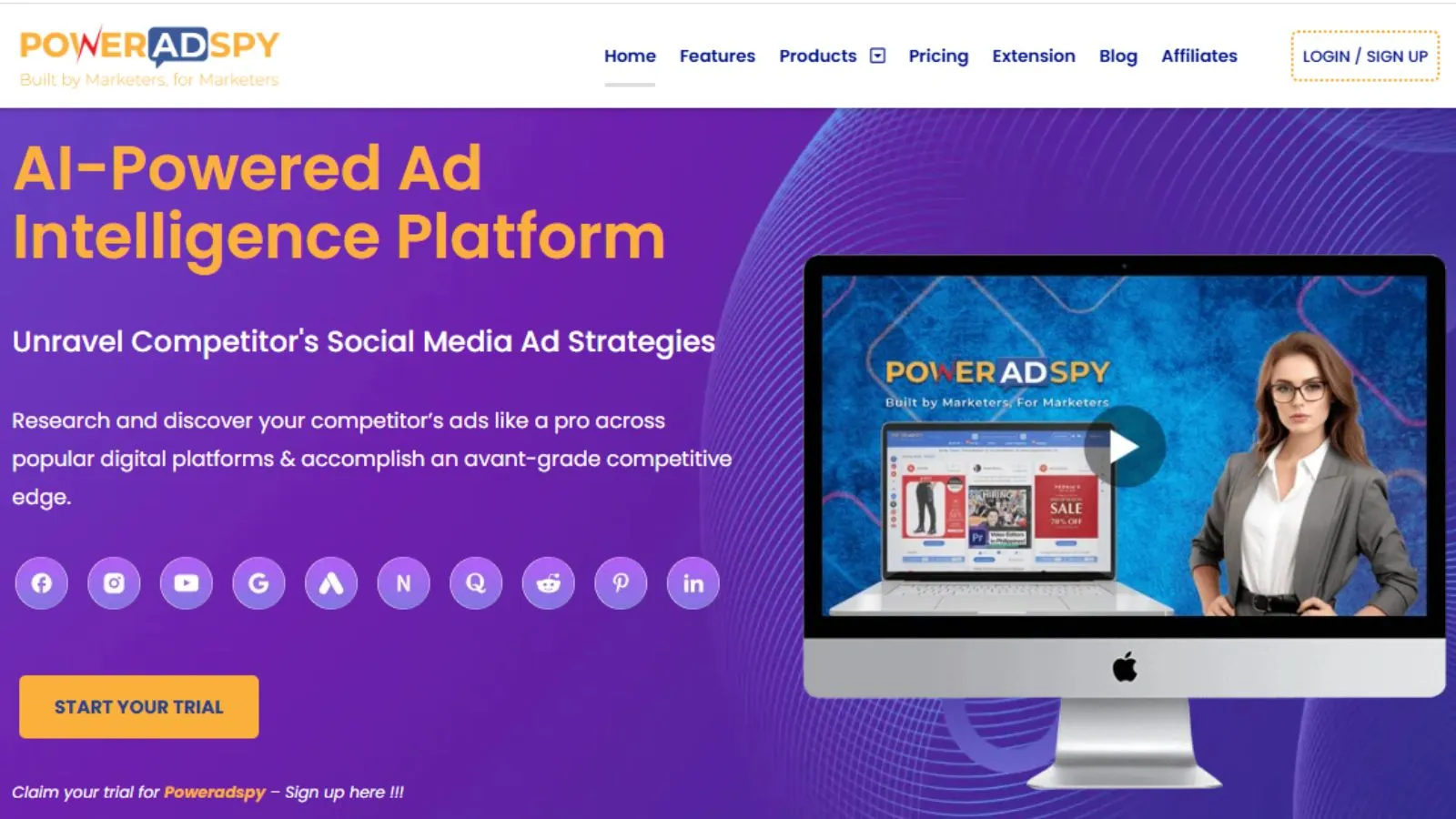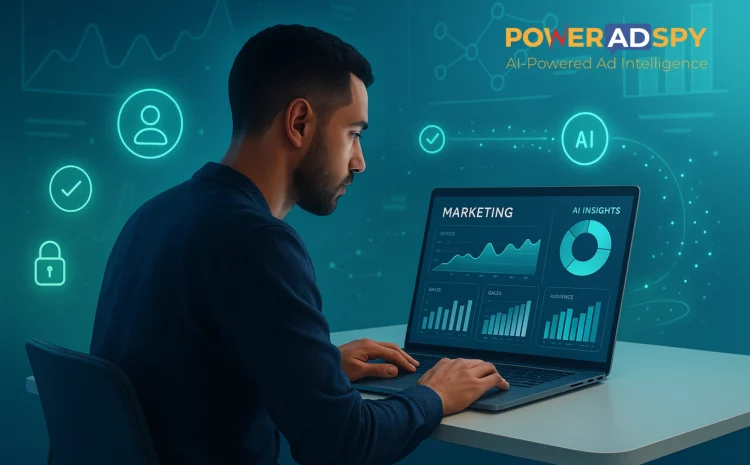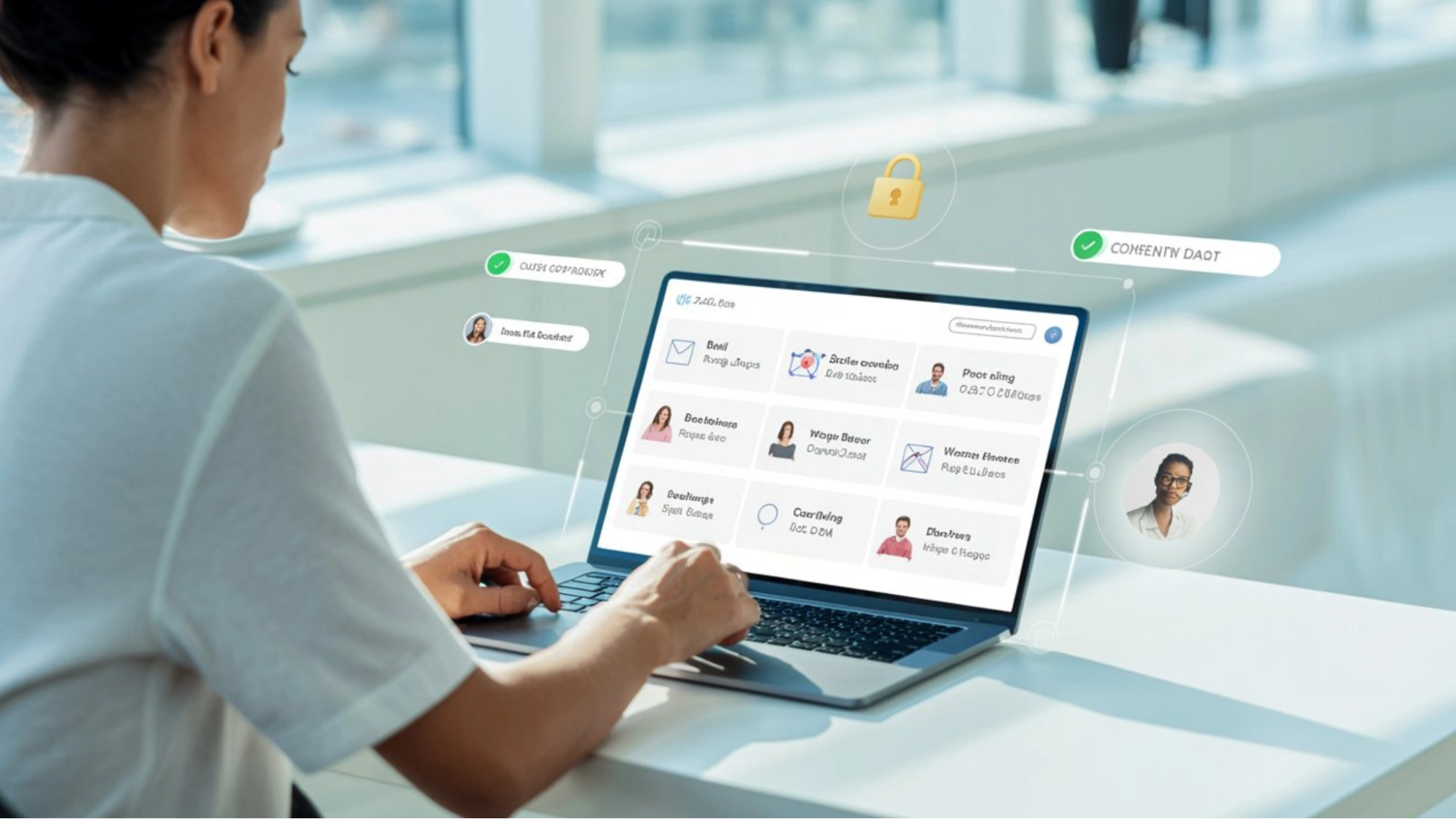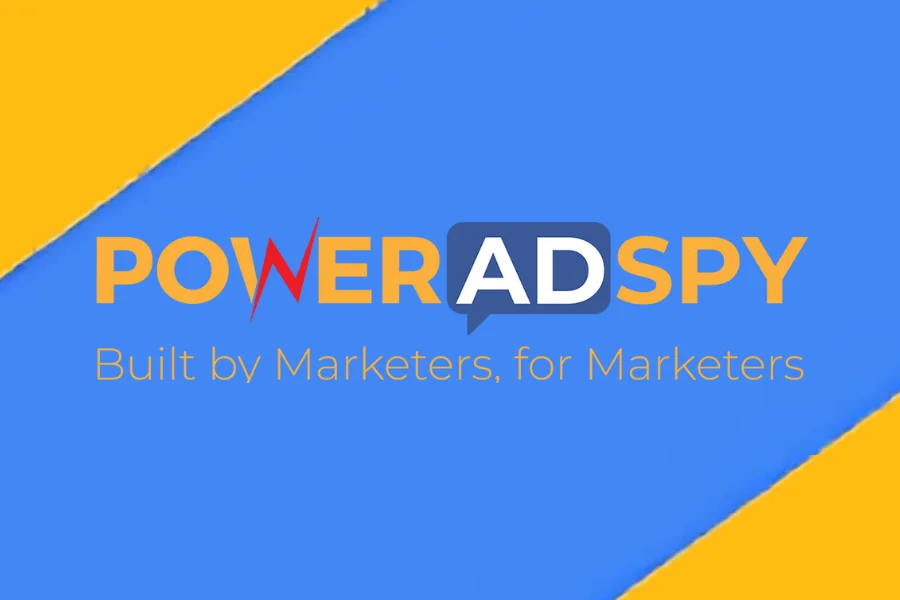5 Smart Ways To Use First Party Data For Better Marketing Results
Marketing is becoming more challenging as third party data becomes less reliable due to privacy regulations, browser changes, and tracking limits, which means that brands cannot rely on the signals they previously used. Data provides a stronger, more stable way to understand customers, thereby improving results.
First-party data is the information you can directly collect from your audience through their actions, like purchasing and interactions with your brand. By using this data, experiences can be personalized, performance can be measured more accurately, and campaigns can be optimized for growth.
In this guide, we walk you through five ways to use first party data to get better marketing outcomes.
Each section focuses on practical steps that can be applied directly, optimizing the attribution model and improving the identity strategy, or testing AI-driven personalization.
In a hurry? Listen to the blog instead!
What Is First Party Data?
First party data is the information that customers choose to share with you through their actions and interactions. It includes everything collected directly from websites, apps, emails, social media, customer service conversations, and purchases. Because it comes directly from your audience, it is accurate, reliable, and fully permission-based.
You will often hear it compared to third party data, which is bought or sourced from outside providers. These data are broad but usually less precise, and their usefulness continues to decline as privacy rules tighten.
In contrast, first-party data is rooted in real behavior and real customers, which makes it far more valuable for personalization, measurement, and long-term strategy.
Common examples of first party data
- Email addresses collected through sign-ups or checkout
- Browsing behavior on your site or app
- Purchase history and transaction details
- Engagement data from newsletters and campaigns
- Survey responses, quiz results, or preference centers
- Customer support chats or CRM notes
Why?
First party data provides a direct permissioned view of what customers want.
It helps you understand intent, predict behavior, build stronger segments, and measure what is working without depending on outside data sources.
In the sections, you will see why this data sits at the center of modern marketing and how to use it to drive better results.
5 Smart Ways To Use First Party Data
Here are five practical ways to use first party data to improve marketing psychology.
Each one focuses on simple steps you can apply right away to get better results.
1: Personalize At Scale With First Party Data AI
AI becomes far more effective when powered by high-quality first-party data. Because this data is collected from real customer actions, like what they browse, buy, and respond to, it provides your models with the context they need to deliver accurate recommendations and personalized experiences.
Instead of relying on generic segments or broad assumptions, businesses can direct messages, offers, and content to what each customer actually cares about.
How Does First Party Data Improve AI Personalization?
AI models require reliable inputs. First party signals provide this information through clear behavioral patterns, such as pages viewed, products added to cart, past purchases, and email engagement.
When these signals are fed into the personalization engine, the content becomes more relevant, which typically leads to higher engagement and stronger conversion rates.
What This Looks Like In Practice
- Personalized product recommendations based on browsing history
- Dynamic landing pages that adapt to a customer’s interests
- Email campaigns by behavior instead of generic schedules
- Predictive offers that surface when someone shows intent to buy
- Chatbots trained on real customer questions and preferences
How To Implement It
Start with clean, unified customer profiles. Connect your website, CRM, analytics, and email tools to a central platform so that your AI models do not work with fragmented data. From there, test one personalized flow at a time, such as the homepage experience and behavior.
What to measure
Track conversion rate, click-through rate, average order value, and engagements.
These metrics show how much value your AI-driven personalization adds compared to your standard campaigns.
Using AI with first party data helps deliver experiences that feel timely and relevant without crossing privacy lines.
It is one of the quickest ways to increase performance while remaining aligned with customer expectations.
2: Improve Measurement With Clean Rooms & Server-Side Events
As third party tracking becomes less reliable, accurate measurement depends on using your own verified data.
Clean rooms and server-side events make this possible by providing a privacy-safe way to connect marketing activities to real outcomes.
How Clean Rooms Help With Attribution?
A clean room allows you to compare your customer data with a partner’s data, such as an ad platform or publisher, without exposing any personal information.
Both sides upload encrypted or hashed identifiers, and the clean room matches them to show which campaigns led to actual action.
You get a clearer attribution, but no raw data leaves the environment.
This approach works even when cookies or cross-device tracking fall short, which keeps the reporting stable across channels.
The Position Of Aerver-Aide Events
Server-side tracking sends key events (purchases, sign-ups, add-to-cart actions) directly from the servers instead of the browser. This avoids ad blockers, browser restrictions, and signal loss. With cleaner event data, your measurement tools and ad platforms can optimize more accurately.
What this looks like in practice
- Matching conversions to ad impressions inside a clean room
- Running incrementality tests without exposing user-level data
- Feeding server-side conversions back to media platforms for better bidding
- Creating consistent cross-channel reports based on verified events
What to measure
Focus on ROAS, cost per acquisition, attribution consistency, and reduction in signal loss. When these numbers stabilize, the measurement framework is working.
Clean rooms and server-side events provide a dependable foundation for analytics, helping you invest confidently and reduce waste without relying on aging third-party signals.
3: Build A Consent-First Identity System

A strong identity framework makes first party data usable across channels without creating privacy risks. Instead of depending on third-party identifiers, you rely on the information that customers choose to share. This provides stable connections between touchpoints and keeps data practices transparent.
Why Is Identity Important?
Modern marketing depends on recognizing customers from one interaction to the next.
If these interactions cannot be connected, personalization, measurement, or reliable automation is not possible.
A consent-first identity system solves this by tying actions back to a customer profile that is allowed to be used
What this looks like in practice
- A clear, simple consent banner that spells out how data will be used
- A preference center where customers can update communication choices
- Hashed email or phone number as a consistent, privacy-safe identifier
- Authenticated sessions that keep identity intact across devices
- A central record of each customer’s permissions and data usage history
How To Implement It?
Start by reviewing how and where you collected consent.
Ensure that every entry point, email sign-up, checkout, form, and account creation captures permission in a clean, compliant way.
Connect your consent management tool to your CRM or CDP so that customer choices automatically control how their data flows through your system.
Next, the identifiers are unified. Choose one primary identifier, hash it for security, and use it across your marketing tools.
This keeps your audience data consistent without exposing any personal information.
What to measure?
Track the consent rate, the number of users with a persistent identifier, and the completeness of your customer profiles.
These metrics indicate whether your identity foundation is strong enough to support the rest of your marketing strategy.
By building a consent-first identity system, you create a reliable structure that protects your customers’ trust and unlocks more effective use of the data they share.
Also Read:
4: Drive Predictive Lifecycle Marketing with a CDP and AI
Once your data and identity setup are in place, the next step is to use that information to predict what customers are likely to do next.
A customer data platform (CDP) paired with AI helps understand patterns, anticipate needs, and deliver the right message at the right time. This turns your first party data into a tool for improving retention, revenue, and lifetime value.
How does predictive lifecycle marketing work?
A CDP pulls data from your website, app, emails, and transactions into a single profile.
AI models then analyze these profiles to identify signals that usually lead to churn, purchase, or re-engagement. Instead of reacting to behavior after it occurs, you can act before it occurs.
What this looks like in practice
- Identifying customers at risk of leaving and sending a tailored win-back offer
- Predicting which users are likely to make a second purchase and nudging them with a targeted recommendation
- Triggering reminders when someone shows early intent but hasn’t taken action
- Building “high potential” segments based on predicted lifetime value
- Automating journeys that adjust based on real-time behavior
How to implement it?
Start with a single lifecycle goal, such as reducing churn or increasing repeat purchases. Feed clean, unified first-party data from your CDP into a simple prediction model. Use the model’s outputs to trigger automated campaigns in your email or marketing automation tool.
The process was kept straightforward. Test small segments, measure performance, and refine your approach as you gather additional data. The goal is to build predictable and repeatable results, not complicated journeys that are difficult to manage.
What to measure
Focus on the retention rate, purchase frequency, lifetime value, and lift generated by predictive segments compared to your standard ones. These metrics show how well lifecycle marketing adapts to real customer behavior.
Predictive lifecycle marketing helps you stay ahead of customer needs, making communication more timely, relevant, and effective without overwhelming the workflow.
5: Monetize & Partner Safely with Privacy-Focused Data Collaborations
Once you strengthen your data foundation, you can create new growth marketing opportunities through privacy-safe partnerships.
Many brands now use first party data to collaborate with publishers, retailers, and media platforms without sharing raw customer information. These partnerships help expand reach, improve targeting, and uncover new revenue streams while maintaining privacy.
How privacy-safe collaborations work
Partners exchange insights in secure environments, often clean rooms, where both sides can compare audience data in an encrypted format.
No personal information leaves the system, and both parties maintain full control over their data.
This allows you to run joint campaigns, build high-quality audiences, and measure performance without exposing sensitive details.
What this looks like in practice
- Running co-branded campaigns using matched audiences
- Creating high-intent segments based on shared signals
- Allowing media partners to activate your anonymized audiences for better targeting
- Licensing aggregated audience insights to approved partners
- Building joint measurement dashboards that don’t rely on cookies
How to implement it
Start by choosing one partner with aligned goals, such as a retail network, publisher, or media platform.
Use a clean room or similar privacy-preserving tools to handle data matching.
Select clear rules for what outputs are allowed, how long data can be used, and what actions each party can take.
We recommend beginning with a small test campaign.
Improvements in reach, relevance, and cost efficiency should be sought. If the partnership drives a meaningful lift, expand into additional segments or channels.
What to measure
Track incremental reach, CPM efficiency, partner-driven revenue, and lift in conversions.
These metrics show whether collaborations strengthen marketing results without compromising trust or compliance.
Privacy focused partnerships are a natural extension of a strong first-party data strategy.
They help scale the audience, improve performance, and unlock new value while staying fully aligned with customer expectations.
Implementation Roadmap: A Practical Checklist
You now have five clear ways to use first party data to improve your marketing results.
This roadmap helps you implement them without becoming overwhelmed. It breaks the process into simple, manageable steps so that you can move from planning to execution with confidence.
Step 1: Audit your current data sources
List where your first party data comes from, website, app, CRM, email, checkout, support, and offline transactions. Identify gaps, inconsistencies, and tools that do not communicate with each other. This provides a clear view of what is usable and what requires cleanup.
Step 2: Strengthen consent and identity
Review how you collect consent across sign-ups, checkouts, and forms. Please ensure that the language is clear and easy to understand. Choose one primary identifier, such as a hashed email, and use it consistently across your tools. This helps build reliable customer profiles.
Step 3: Centralize your data in a CDP
Connect your main customer touchpoints to a central data platform. This step turns scattered interactions into unified profiles that can be used for personalization, automation, and measurement. Initially, the setup should be kept simple to avoid complexity.
Step 4: Move key events to server-side tracking
Shift important actions, purchases, sign-ups, and major engagement events from browser tracking to the server-side. This reduces signal loss and maintains measurement accuracy, even as browser rules evolve.
Step 5: Launch your first predictive or personalized flow
Choose one area to test, such as a personalized homepage, churn-risk email flow, or predictive product recommendation. Start small, measure the results, and refine. Quick wins help build momentum.
Step 6: Test a clean-room partnership
Choose one trusted partner or platform and run a small clean-room test on it. Focus on a single audience or campaign segments. This allows for the exploration of collaboration without committing to a large rollout.
Step 7: Track performance and refine
Create a simple dashboard with your core KPIs: retention, ROAS, conversion lift, consent rate, and profile completeness. These should be reviewed weekly or monthly to determine where improvements are occurring and where adjustments are needed.
This roadmap keeps your team focused, reduces friction, and helps you move from theory to practice. With each step, your first-party data becomes more reliable, actionable, and valuable across your marketing efforts.
Measurement & KPIs: What to Track for Each Smart Way
A strong first party data strategy only works if you can measure its impact.
Clear KPIs help you understand what is improving, what needs attention, and where to scale your efforts.
The metrics listed below were used to track the performance across the five approaches without adding unnecessary complexity.
Personalization and AI
What to measure:
- Conversion rate
- Click-through rate
- Average order value
- Engagement lift compared to your control group
- These numbers show whether AI-driven experiences change customer behavior.
Clean rooms and server-side events
What to measure:
- ROAS
- Attribution consistency across channels
- Reduction in signal loss
- Cost per acquisition
- These indicators indicate the accuracy of the reporting and whether the investment is allocated correctly.
Consent-first identity
What to measure:
- Consent rate
- Percentage of users with a persistent identifier
- Profile completeness
- These metrics help you understand how stable and usable your identity foundation is for authentication.
Predictive lifecycle marketing
What to measure:
- Retention rate
- Purchase frequency
- Lifetime value
- Campaign lift from predictive segments
- This shows whether predictive models improve customer outcomes and increase long-term value.
Privacy-safe partnerships
What to measure:
- Incremental reach
- Partner-driven revenue
- CPM efficiency
- Lift in conversions from joint campaigns
- This helps confirm whether collaborations produce meaningful and measurable value.
Keep the dashboard simple. Focus on the metrics that connect directly to your goals, review them regularly, and use the insights to refine your strategies. When your KPIs move in the right direction, you know your first-party data is working as it should.
Essential Tool For Smarter Ad Research

If your goal is to make the most of your first-party data by improving your campaign strategy, one tool that can give you a major leg-up is PowerAdSpy.
PowerAdSpy is an “ad intelligence” platform that lets you uncover what competitors are doing, discover creative ideas, and gain insights that you can apply in your own marketing efforts.
Here are several specific features of PowerAdSpy that make it especially useful.
Enhanced Search & Comprehensive Filters: You can search by keywords, niches, domains, or competitor names and filter by engagement, date range, ad type, etc..
Ad Component Breakdown: View individual elements of ads, such as headlines, descriptions, creatives, CTA, and placements, to understand what drives performance.
Dashboard Personalization & Multi-Platform Coverage: The dashboard allows customization, and you gain access not just on one platform but across social and display networks (including native, Google Display Network, Reddit, and Quora).
Free Browser Extension: There is a browser extension for Facebook that offers quick access to competitive data and insights without leaving your workflow.
Use Case Examples: The platform is used by marketers to reduce ad research time, cut A/B testing costs, and discover high-performing ad models more quickly.
Conclusion
First party data provides a clearer and more reliable way to understand customers and improve marketing. When used for personalization, measurement, identity, lifecycle campaigns, and safe partnerships, the results are stronger and more consistent.
Tools like PowerAdSpy help support this work by showing what ads and ideas are performing in the market. It provides real examples that can be used to shape better campaigns and make smarter decisions.
Starting with small steps, focusing on clean data, and building from there is recommended. When you use your first-party data well, you create marketing that is more accurate, efficient, and easier to scale.
FAQ
How do I know if my first party data is trustworthy?
Your data is trustworthy if they are collected directly from your customers, consistently recorded, and free from duplicates or missing fields. Run basic checks each month to spot errors and keep your profile clean.
2. How much first party data do I need before I start using AI?
You do not need huge datasets. Even a few thousand clean customer records are sufficient for simple prediction models or personalized messaging. What matters most is accuracy rather than volume.
3. What tools can help manage first party data besides a CDP?
You can start with your existing CRM, analytics platform, email tool, or tag manager. As your needs grow, you can shift to more advanced tools, but you do not need a full CDP on day one.
4. Is first-party data useful for small businesses?
Yes. Small businesses often gain value because their audiences are more focused. Even basic behavioral and purchase data can improve targeting, retention, and personalization of advertising.













